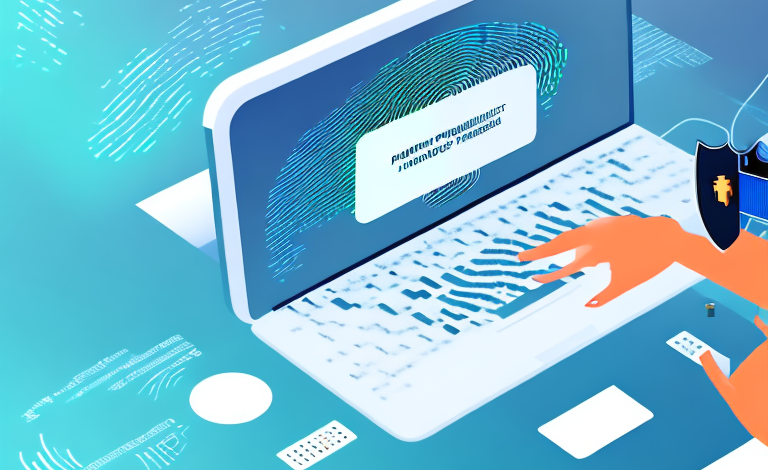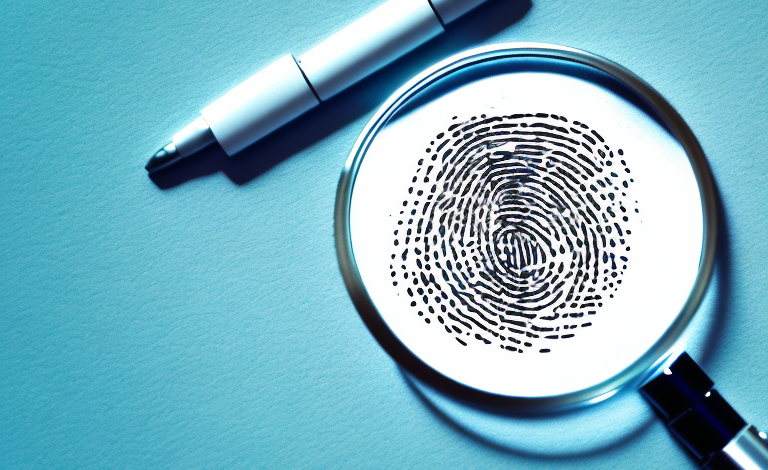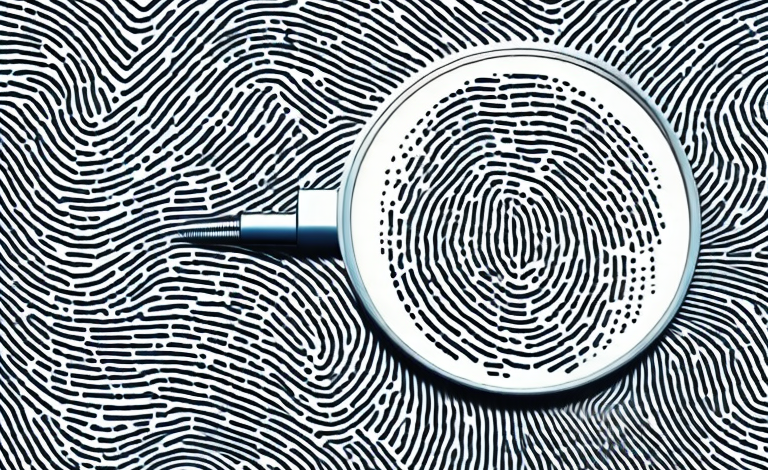Biometric authentication systems are becoming increasingly popular in today’s digital age. These systems use unique biological characteristics, such as fingerprints, to verify a person’s identity. But what happens when a hacker gains access to your fingerprint data? In this article, we will explore the vulnerability of such biometric authentication systems and the potential consequences of a hacker stealing your fingerprint.
The vulnerability of biometric authentication systems
Fingerprint authentication is often touted as one of the most secure means of identity verification. However, biometric data can still be stolen by hackers. One of the primary vulnerabilities of biometric authentication systems lies in the storage of this data. Just like any other personal information, biometric data can be targeted by hackers and used for malicious purposes.
Another vulnerability of biometric authentication systems is the possibility of false positives and false negatives. False positives occur when the system incorrectly identifies someone as an authorized user, while false negatives occur when the system fails to recognize an authorized user. This can happen due to various reasons such as changes in the user’s physical appearance or the quality of the biometric data.
Moreover, biometric authentication systems can also be vulnerable to physical attacks. For example, an attacker can use a fake fingerprint or facial mask to bypass the system. This is known as a spoofing attack and can be difficult to detect. Therefore, it is important to implement additional security measures such as multi-factor authentication to prevent such attacks.
How fingerprints are stored and protected by tech companies
Fingerprint data is usually stored in encrypted form on a device or server. However, to provide a seamless user experience, it is sometimes stored in plain text form with inadequate security measures. Tech companies often claim that they do not store any biometric data and only provide access to an encrypted version of the data. Nevertheless, biometric data can still be extracted from the encrypted data if a hacker gains access to it.
One way that tech companies protect fingerprint data is by using multi-factor authentication. This means that in addition to a fingerprint, users must also provide a password or another form of identification to access their accounts. This adds an extra layer of security and makes it more difficult for hackers to gain access to the data.
Another method used by tech companies to protect fingerprint data is by regularly updating their security protocols. As technology advances, so do the methods used by hackers to gain access to sensitive information. By staying up-to-date with the latest security measures, tech companies can better protect their users’ biometric data from potential threats.
The likelihood of fingerprint data breaches
As biometric authentication becomes more popular, the likelihood of data breaches only increases. Criminals and hackers are always on the lookout for any weakness in a system that they can exploit to their advantage. Fingerprint data breaches are not as common as other types of data breaches, but they do occur, and they can be serious.
One reason why fingerprint data breaches can be particularly concerning is that unlike passwords or other forms of authentication, you cannot change your fingerprints. Once your fingerprints have been compromised, there is no way to reset them. This means that if your fingerprints are stolen, you may be at risk of identity theft for the rest of your life.
Another issue with fingerprint data breaches is that they can be difficult to detect. Unlike a password, which you can change if you suspect it has been compromised, you may not even realize that your fingerprints have been stolen until it is too late. This is why it is important to be vigilant about protecting your biometric data, and to use additional security measures such as two-factor authentication whenever possible.
Case studies of past fingerprint data breaches
The most significant fingerprint data breach in recent times was the 2015 breach of the US federal government’s database. Hackers were able to steal the fingerprints of over 5.6 million government employees. Another example is the 2018 Aadhaar data breach in India, where over one billion people’s biometric data, including fingerprints, was compromised.
In addition to these high-profile breaches, there have been numerous smaller-scale incidents involving the theft of fingerprint data. For example, in 2016, a hacker was able to access the fingerprint data of 1.5 million users of a popular mobile app. This incident highlights the importance of securing not only government databases but also the data held by private companies.
The dark web trade in stolen biometric data
Once a hacker has stolen your fingerprint data, they can sell it on the dark web to other criminals for use in any number of illegal activities. Biometric data is referred to as “the new oil” of the digital world, and it can fetch a high price on the black market. The stolen data can be used to access sensitive information, commit identity theft, or even create fake identities for criminal purposes.
In addition to fingerprints, other types of biometric data that are commonly stolen include facial recognition data, iris scans, and voice prints. These types of data are often used for security purposes, such as unlocking smartphones or accessing secure facilities. However, if they fall into the wrong hands, they can be used to impersonate individuals and gain unauthorized access to sensitive information. It is important to protect your biometric data just as you would any other personal information.
The potential consequences of a hacker stealing your fingerprint
The consequences of a hacker stealing your fingerprint can be severe. They can potentially gain access to all your personal data, including your bank accounts, medical records, and social media accounts. They can also easily impersonate you in various situations, and you may have a challenging time fighting back. The impact of losing one’s biometric data can be life-long and far-reaching.
Moreover, the theft of your fingerprint can also lead to identity theft, which can cause significant financial damage. Hackers can use your fingerprint to create fake IDs, apply for loans, and even commit crimes in your name. This can lead to legal troubles and a damaged reputation that can take years to recover from.
Additionally, the theft of your fingerprint can compromise your physical security. If your fingerprint is used to access secure areas, such as your workplace or home, a hacker can gain unauthorized access to these areas. This can put you and your loved ones in danger, and it can also lead to theft or vandalism of your property.
Ways to protect your fingerprint data from hackers
There are various ways to protect your fingerprint data from falling into the wrong hands. You should always ensure that the device or service you are using has adequate security measures in place. Use strong passwords, two-factor authentication, and avoid storing sensitive data on public servers. Also, do not share any biometric data unless necessary, and always be vigilant of phishing scams.
Another way to protect your fingerprint data is to regularly update your device’s software and security patches. This ensures that any vulnerabilities or loopholes in the system are fixed, making it harder for hackers to gain access to your data. Additionally, you can use encryption tools to secure your data, making it unreadable to anyone who does not have the decryption key.
It is also important to be aware of the risks associated with using public Wi-Fi networks. Hackers can easily intercept data transmitted over these networks, including your fingerprint data. Therefore, it is advisable to avoid using public Wi-Fi when accessing sensitive information or use a virtual private network (VPN) to encrypt your data and protect your privacy.
Alternatives to biometric authentication systems
If you are uncomfortable with the security of your biometric data, you can consider alternative authentication methods. These may include one-time passwords, physical tokens, or smart cards. While these options may not be as convenient as biometric authentication, they can provide an added layer of security.
One-time passwords are generated for a single use and are typically sent to the user’s mobile device or email. This method can be more secure than biometric authentication as it eliminates the risk of biometric data being stolen or replicated. However, it can be inconvenient as users need to wait for the password to be sent to them.
Physical tokens and smart cards are physical devices that users carry with them to authenticate their identity. These devices can be more secure than biometric authentication as they are not susceptible to hacking or spoofing. However, they can be lost or stolen, which can compromise the user’s security. Additionally, these devices can be expensive to implement and maintain.
Future developments in biometric security technology
The future of biometric security technology is likely to involve more extensive use of artificial intelligence and machine learning. These technologies will help improve the accuracy of biometric authentication, reducing the vulnerability of such systems to hackers.
In addition, there is also a growing trend towards the use of multi-factor authentication, which combines biometric data with other forms of authentication such as passwords or security tokens. This approach provides an extra layer of security and makes it even more difficult for unauthorized individuals to gain access to sensitive information or areas.
Legal implications of fingerprint data breaches and theft
If you fall victim to fingerprint data breaches or theft, you may be entitled to compensation. You can sue the organization or company responsible for the security of your data. Laws around biometric data security vary between jurisdictions, and you may want to consult with a lawyer specializing in this area.
In addition to potential compensation, fingerprint data breaches and theft can also have serious legal consequences for the responsible organization or company. They may face fines, legal action, and damage to their reputation. In some cases, criminal charges may be brought against individuals responsible for the breach or theft.
It is important to note that prevention is key when it comes to biometric data security. Organizations and companies should implement strong security measures, such as encryption and access controls, to protect sensitive data. Individuals can also take steps to protect their own biometric data, such as using strong passwords and enabling two-factor authentication.
Industry regulations surrounding the storage and protection of biometric data
The storage and protection of biometric data are subject to industry regulations worldwide. These regulations outline appropriate security measures and set standards for companies to follow when handling biometric data. Companies that do not comply with these regulations may face hefty fines and legal action.
In conclusion, the use of biometric authentication systems has undoubtedly improved security measures, and they provide a safe and convenient way to access services. However, these systems are not immune to the threat of hackers, and it is essential to take adequate measures to protect your fingerprint data from being breached or stolen. By following the recommendations in this article, you can safeguard your biometric data and protect your personal information from being used maliciously.
One of the most significant concerns surrounding the storage and protection of biometric data is the potential for misuse. Biometric data can be used to identify individuals, and if it falls into the wrong hands, it can be used for nefarious purposes such as identity theft or fraud. Therefore, it is crucial for companies to implement strict security measures to prevent unauthorized access to biometric data.
Another important consideration is the ethical implications of using biometric data. Some individuals may feel uncomfortable with the idea of their biometric data being collected and stored by companies. It is essential for companies to be transparent about their use of biometric data and to obtain explicit consent from individuals before collecting and storing their biometric information.



